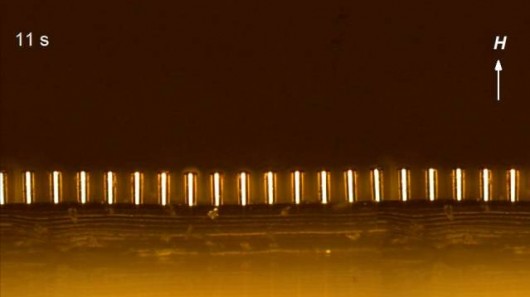
What if your house's windows could automatically reduce the amount of hot sunlight passing through them, or your car's windshield could cause rain droplets to bead off to its edges? These things and more could soon be possible, thanks to a new animal hair-inspired material developed at MIT.
 What if your house's windows could automatically reduce the amount of hot sunlight passing through them, or your car's windshield could cause rain droplets to bead off to its edges? These things and more could soon be possible, thanks to a new animal hair-inspired material developed at MIT.
What if your house's windows could automatically reduce the amount of hot sunlight passing through them, or your car's windshield could cause rain droplets to bead off to its edges? These things and more could soon be possible, thanks to a new animal hair-inspired material developed at MIT.
The material consists of a base layer of transparent flexible silicone, studded with a dense array of tiny nickel microhairs (or "micropillars"). At around 70 microns in height and 25 microns in width, each one is approximately a quarter the diameter of a human hair.
When an external magnetic field is applied at one side of the array, all of the hairs simultaneously bend towards it. The degree to which they bend can be controlled by varying the intensity of the field.
Firstly, this response can be used to alter how much light passes through the material. While the microhair array is pretty much clear when viewed top-down while the hairs are standing straight up, its opacity increases as the hairs bend over – they're essentially working like the slats in a set of window blinds
Secondly, water droplets resist rolling "against the grain" of the bent-over hairs, but will readily roll in the direction that the hairs are pointing. Utilizing this characteristic, it's possible to guide the path of water droplets moving across the surface of the material. They can even be made to roll uphill, by bending the hairs underneath a droplet in that direction.
With these two qualities in mind, the material could be used in applications such as smart windows that block excess sunlight from overheating buildings during the day, windshields that direct moisture away from the driver's line of sight, rain-repellant clothing, or even lab-on-a-chip devices that precisely guide the flow of liquid samples through their microchannels.
The research is being led by mechanical engineering grad student Yangying Zhu, and is described in a paper that was recently published in the journal Advanced Materials.

 Previous page
Previous page Back to top
Back to top







